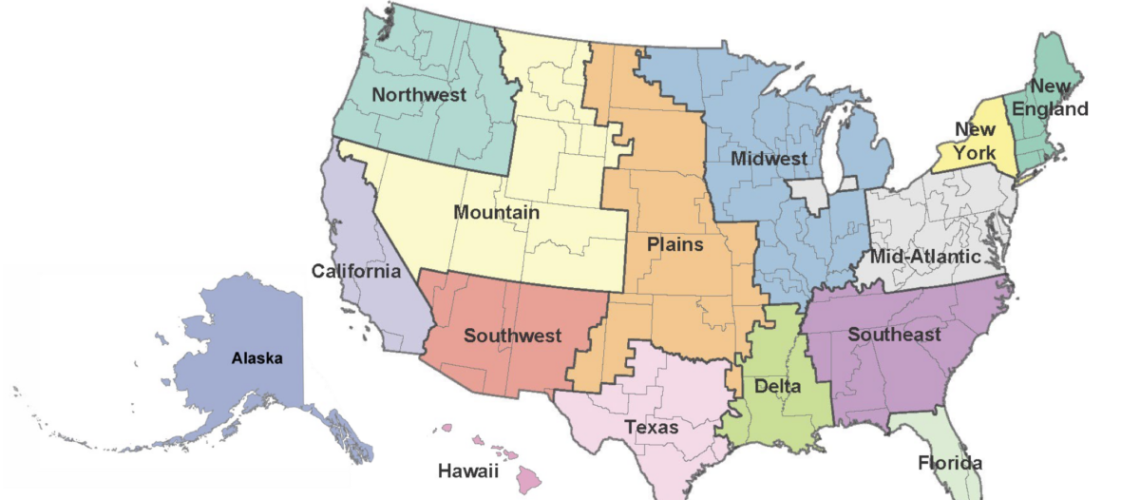DOE will fund the Transmission Facilitation Program projects.
The Department of Energy (DOE) has announced a $1.3 billion commitment to fund the development of three transmission lines crossing six states.
These projects would add a combined 3,500 MW of capacity to the domestic grid, said Gregory Wetstone, president and chief executive officer, American Council on Renewable Energy. Construction of the transmission lines would result in the addition of over 13,000 direct and indirect jobs across the country.
The projects include:
- Cross-Tie 500kV Transmission Line 9 (Cross-Tie): This proposed project will connect existing transmission systems in Utah and Nevada. Cross-Tie will cover 214 miles and have a capacity of 1,500 MW. It will run bi-directionally, which the DOE suggests will increase transfer capabilities in the West. Construction is expected to begin in early 2025.
- Southline Transmission Project (Southline): This 175-mile, 748 MW transmission line will run from Hidalgo County, N.M., to Pima County, Ariz. The project is the first phase of a larger development intended to upgrade existing lines along its route to reduce congestion and constraints in the region. Development of Southline is expected to begin in early 2025.
- Twin States Clean Energy Link (Twin States): This 1,200 MW, high-voltage, direct current, bidirectional line will power clean energy firms in Quebec, Canada. Moreover, the New England grid will use the line to export excess power back to Canada. The DOE suggests New England will produce more energy than it needs as the offshore industry expands in the state. Developers are expected to begin constructing Twin States during the fall or winter of next year.
The projects are part of the Biden Administration’s Investing in America Agenda, and includes making strategic public investments through educating the workforce in clean energy jobs. In addition, incentivizing the development of green technology to saturate the market, thus lowering costs and helping small and medium enterprises in the industry thrive.
Specifications for each project will reference findings from the National Transmission Needs Study (Needs Study). Conducted by the DOE, the Needs Study explores the financial and strategic factors influencing the DOE’s trilateral approach to upgrading the domestic grid. The DOE’s scheme aims to improve transmission planning, streamline the permitting process, and secure the necessary financing to support and sustain this build-out.
The Needs Study also considers how each project will contribute toward achieving 2030 electric emissions savings targets outlined under section 60107(5) of the Inflation Reduction Act (IRA).
According to the DOE, the Cross-Tie project will move the Mountain region 14% closer toward constructing the 2300 GW miles of new transmission necessary to support 2030 CO2 emissions savings targets. Southline will move the Southwest region 14% closer toward building the 935 GW miles of new transmission needed. Lastly, Twin States will move the Northeast region 79% closer toward developing the 1.5 GW of new transfer capacity needed with its neighbors to reach the IRA’s 2030 CO2 target emissions savings.
Funding
The Transmission Facilitation Program (TFP) is financed by the Bipartisan Infrastructure Law’s $2.5 billion revolving fund. The money is meant to help cover costs associated with developing and renovating large-scale transmission lines and connecting all domestic microgrids.
The DOE is allowed to borrow the $2.5 billion in three ways. The first involves capacity contracts, where the DOE could agree to cover financial obligations and consequences of up to 50% of planned transmission lines for up to 40 years, at which point it could sell the contract to recover costs. The DOE is entering capacity contract negotiations for the three proposed transmission lines.
The second method is securing direct loans from the DOE.
Finally, the DOE could enter public-private partnerships in areas where the proposed transmission line would run through (national interest electric transmission corridors).
The DOE estimates releasing a second round of TFP funding totaling $1 billion early next year. This would happen through a combination of public-private partnerships, loans and capacity contracts.



